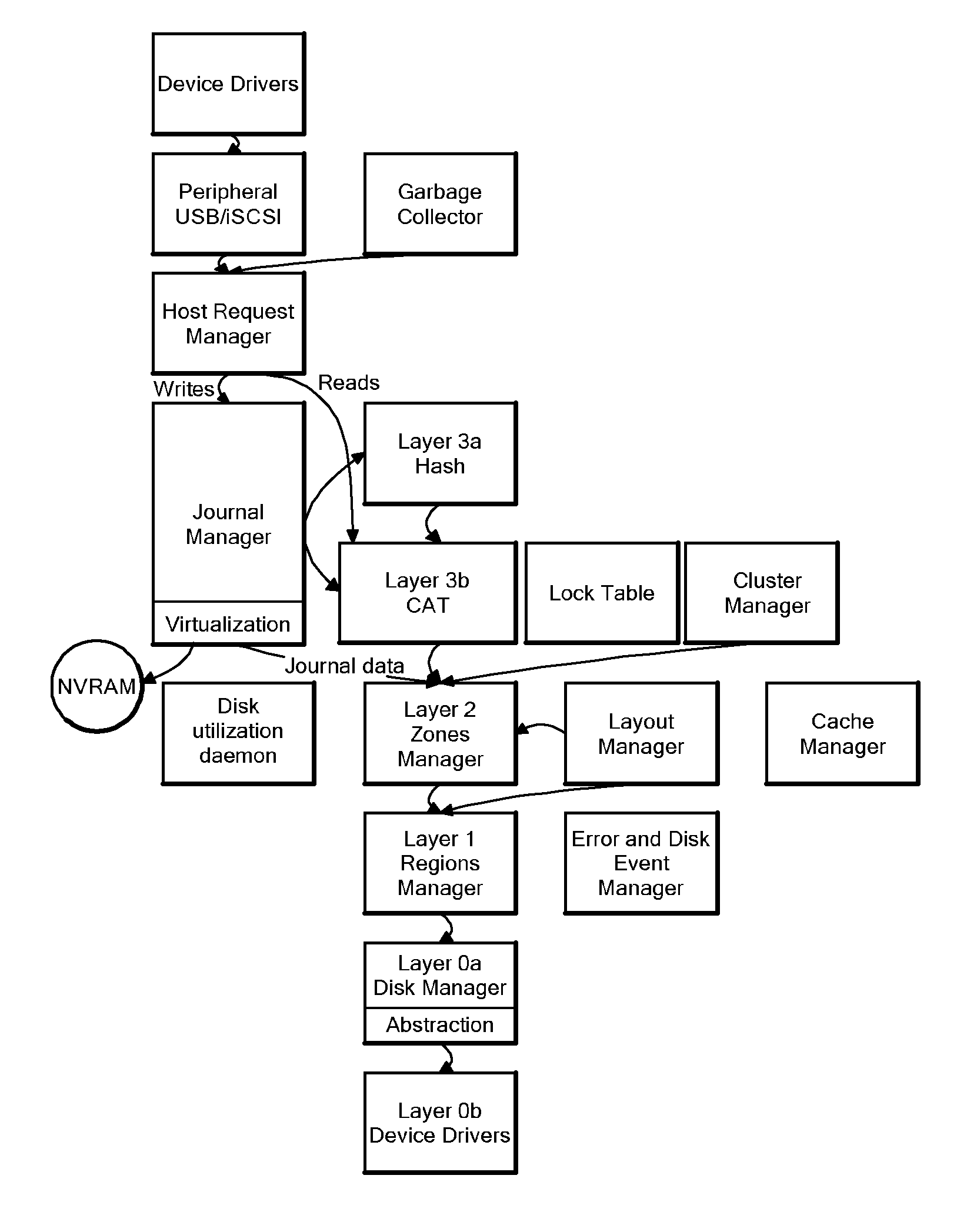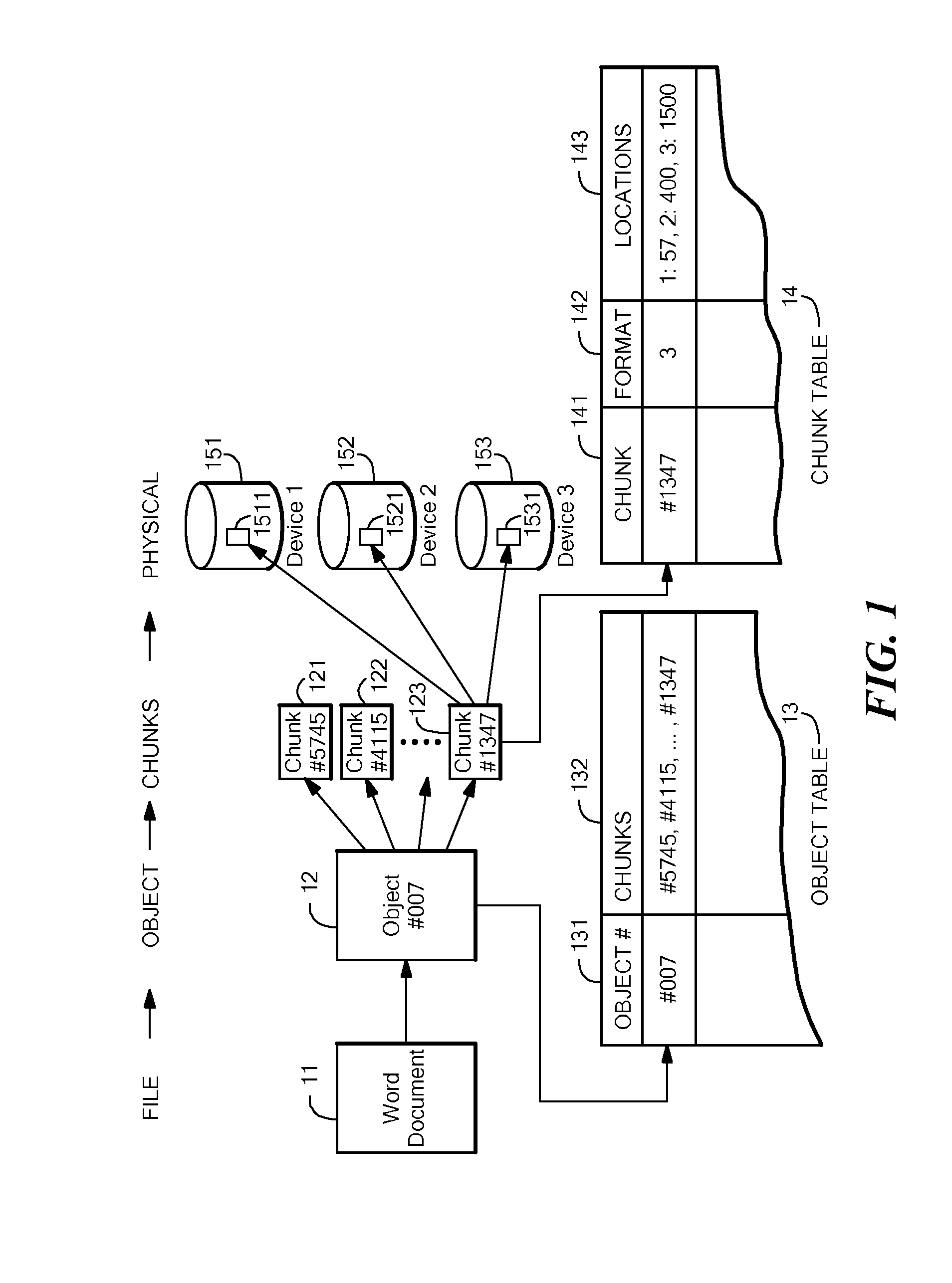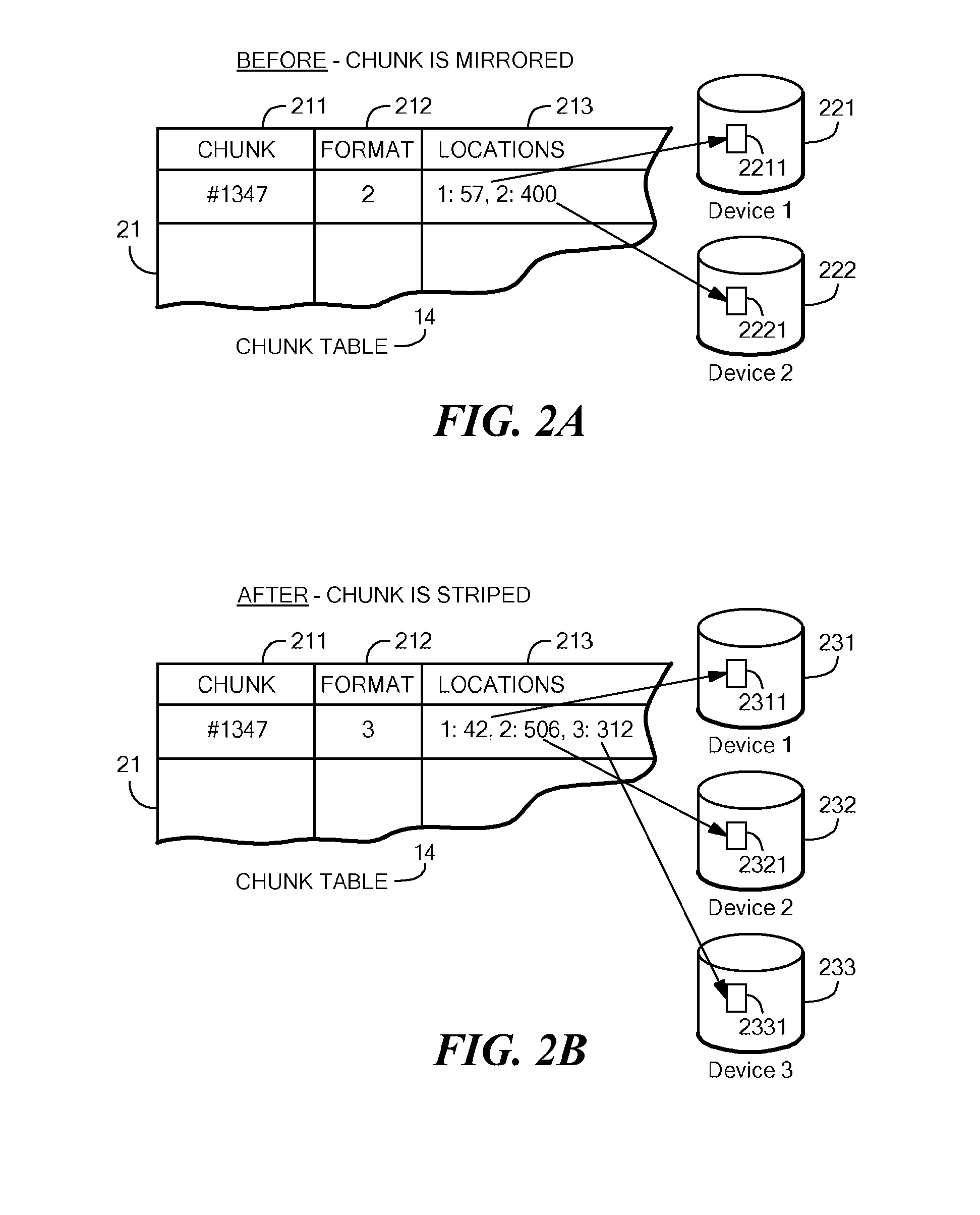Filesystem-Aware Block Storage System, Apparatus, and Method
a filesystem and block storage technology, applied in the field of digital data storage systems and methods, can solve the problems of disc-surface corruption on an infrequently used area of the disk array, design may not be able to use any capacity on the drive that exceeds the capacity of the smallest drive in the array, and it is not always possible to determine that corruption has occurred, so as to enhance accessibility and enhance storage efficiency
- Summary
- Abstract
- Description
- Claims
- Application Information
AI Technical Summary
Benefits of technology
Problems solved by technology
Method used
Image
Examples
Embodiment Construction
[0055] Definitions. As used in this description and the accompanying claims, the following terms shall have the meanings indicated, unless the context otherwise requires:
[0056] A “chunk” of an object is an abstract slice of an object, made independently of any physical storage being used, and is typically a fixed number of contiguous bytes of the object.
[0057] A fault-tolerant “pattern” for data storage is the particular which by data is distributed redundantly over one or more storage devices, and may be, among other things, mirroring (e.g., in a manner analogous to RAID1), striping (e.g., in a manner analogous to RAID5), RAID6, dual parity, diagonal Parity, Low Density Parity Check codes, turbo codes, or other redundancy scheme or combination of redundancy schemes.
[0058] A hash number for a given chunk is “unique” when the given chunk produces a hash number that generally will differ from the hash number for any other chunk, except when the other chunk has data content identica...
PUM
 Login to View More
Login to View More Abstract
Description
Claims
Application Information
 Login to View More
Login to View More - R&D
- Intellectual Property
- Life Sciences
- Materials
- Tech Scout
- Unparalleled Data Quality
- Higher Quality Content
- 60% Fewer Hallucinations
Browse by: Latest US Patents, China's latest patents, Technical Efficacy Thesaurus, Application Domain, Technology Topic, Popular Technical Reports.
© 2025 PatSnap. All rights reserved.Legal|Privacy policy|Modern Slavery Act Transparency Statement|Sitemap|About US| Contact US: help@patsnap.com



